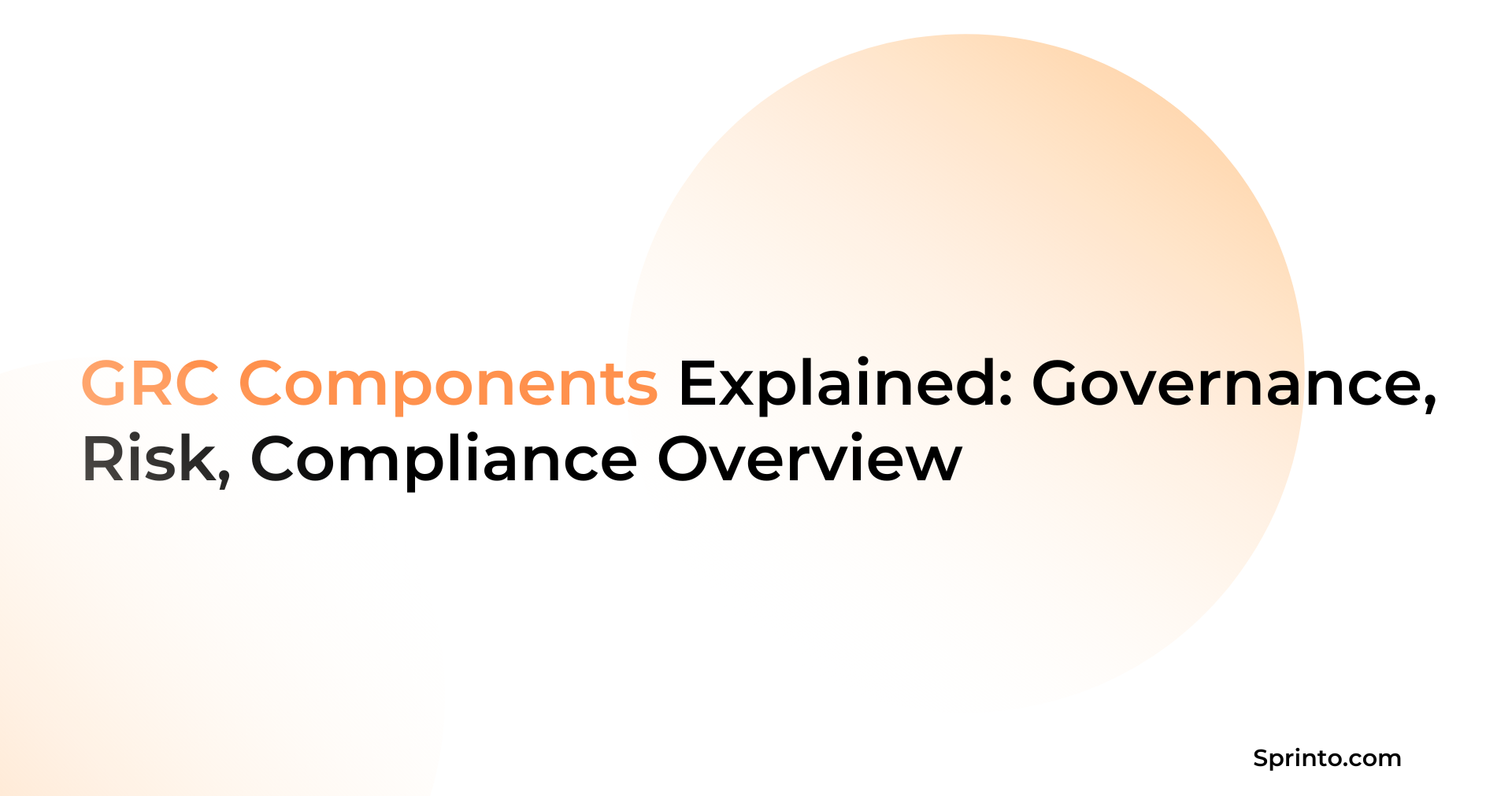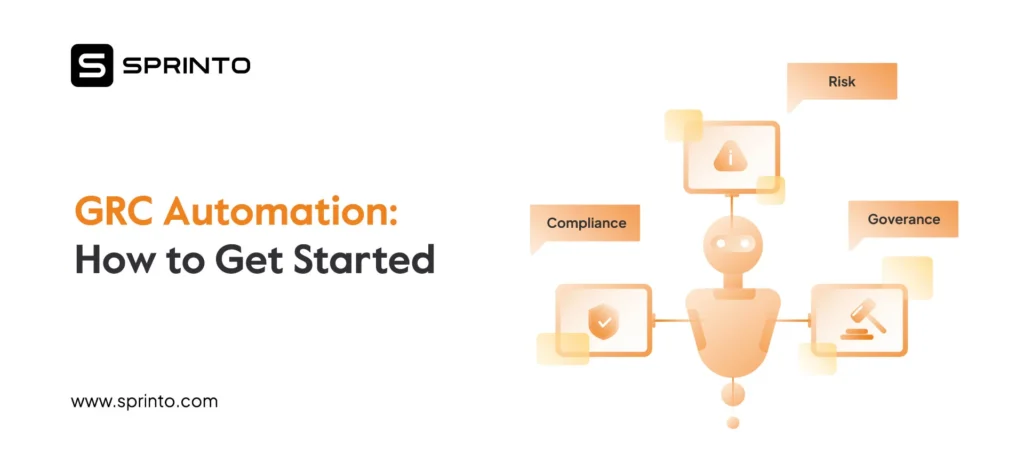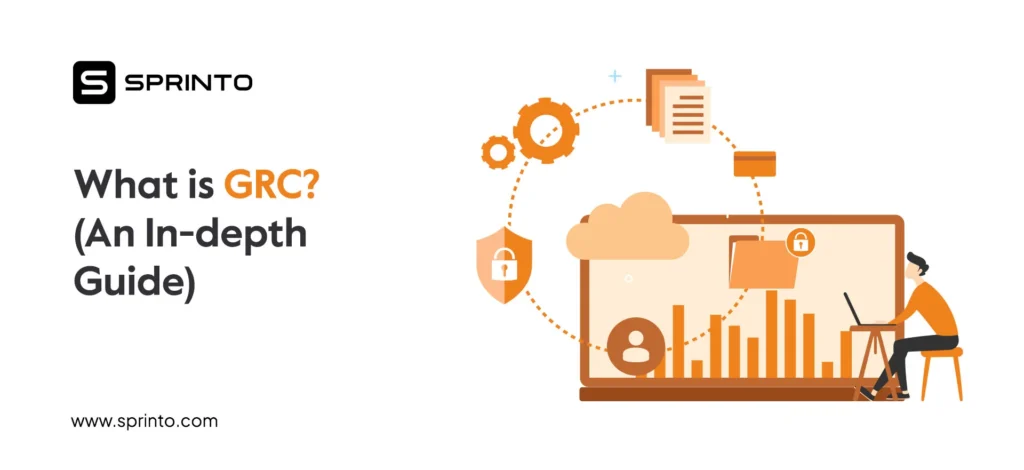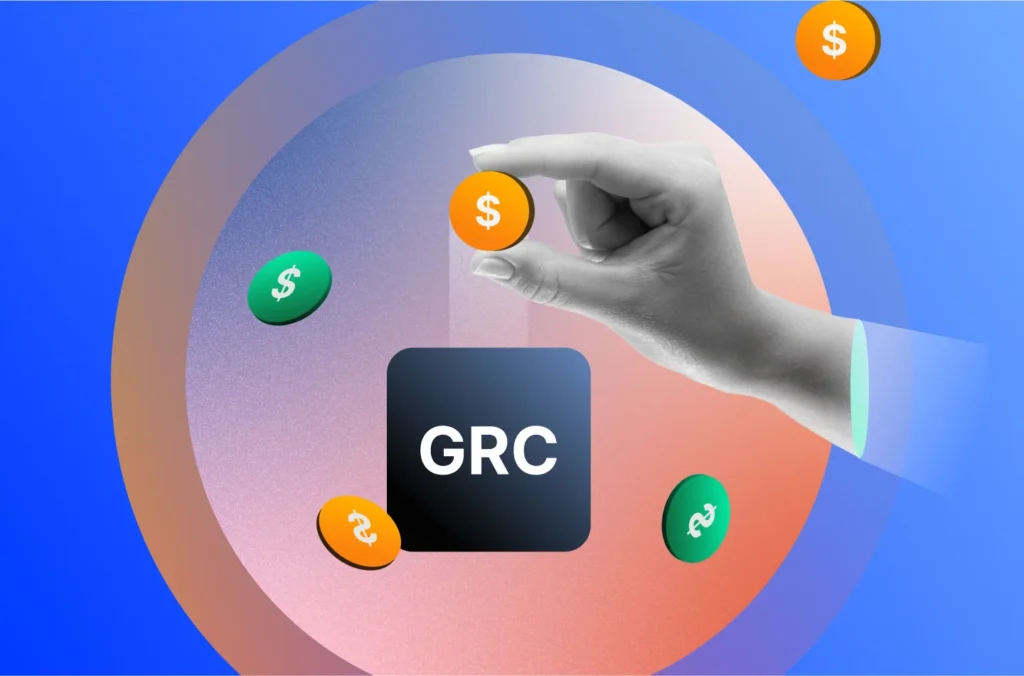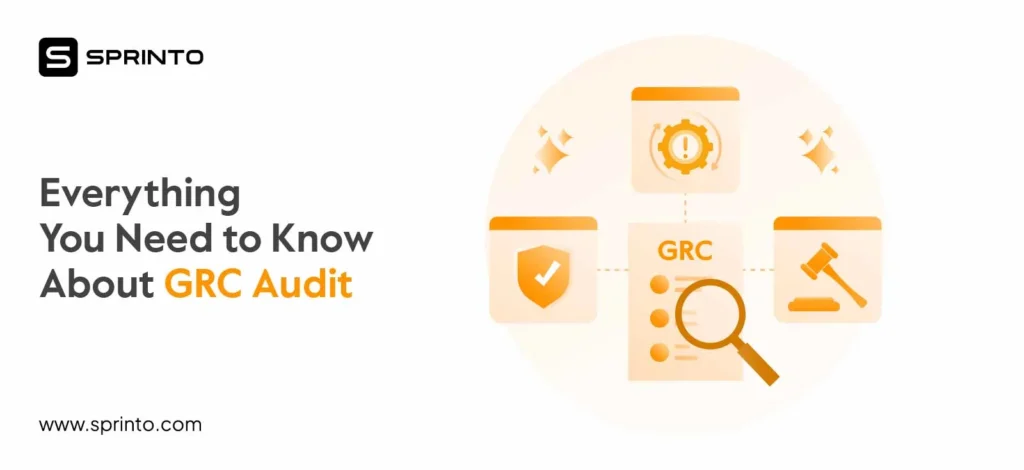Every business has always needed strategic direction, practices that minimize risks, and compliance to avoid legal penalties. There may be a lack of formal processes, but historically, Governance, Risk, and Compliance has been practiced by businesses individually.
Fast-forward to the recent trends where a need for an integrated approach has been highlighted. This shift is driven by businesses going global, integrated technologies, the interconnected nature of risks and the recognition of cybersecurity concerns as critical business concerns. Organizations now realize that an integrated GRC framework is the way forward and it has contributed to a reimagined approach. This approach fosters a more cohesive strategy and helps organizations drive better results.
But before you understand the integration, it’s essential that you dive deep into each of the components. So, let’s explore GRC components and how they work together.
GRC (Governance, Risk, and Compliance):
GRC is an integrated framework for aligning business objectives with strategic governance, managing risk exposure, and maintaining regulatory compliance.
3 Core Components:
• Governance: Sets strategic direction, defines roles, enforces policies, tracks performance, and ensures accountability.
• Risk: Identifies, assesses, mitigates, and continuously monitors organizational risks (financial, operational, cyber, third-party).
• Compliance: Ensures adherence to applicable laws, standards (e.g., GDPR, ISO 27001), and internal policies through controls, audits, and reporting.
Why Does GRC Integration Matters?
• Aligns objectives across teams
• Reduces redundancy and cost
• Enables faster, informed decision-making
• Improves transparency and accountability
• Strengthens cyber resilience and audit readiness
Other GRC Elements (as per Capability Model 3.5):
• Learn – Understand internal/external context
• Align – Define direction, allocate resources
• Perform – Execute with proactive controls
• Review – Measure, monitor, and refine strategy
How They Work Together:
• Governance defines risk appetite and sets rules
• Risk management operates within governance bounds
• Compliance enforces those rules and flags issues
• Together, they form a closed-loop system
Why Sprinto?
Sprinto unifies governance, risk, and compliance into one automated platform, reducing manual effort, increasing control implementation, and giving you full visibility.
What is GRC?
GRC stands for Governance, Risk and Compliance. It is a structured, unified approach covering three core practices that help the organization align resources with business objectives, minimize risks, and ensure regulatory compliance.
Integrating the 3 elements of GRC helps make well-informed decisions, optimize IT and other investments, ensure accountability, maintain business continuity, and contribute to long-term success.
Must check: Best GRC Tools for Assurance Leaders: Reviews and Ratings
Deep dive into 3 GRC components
GRC is an integration of the 3 components—Governance, Risk, and Compliance that work together to ensure that the operations run smoothly and there is seamless communication and collaboration across departments. It enables a comprehensive view of the risk landscape and also help adhere to pertinent regulations.
Governance
Governance is a set of rules, policies, procedures, and mechanisms by which an organization is directed and managed. Effective governance starts with a purpose, helps establish clear roles and responsibilities, and ensures strategic alignment to maximize business value.
The Governance component sets the tone for leadership commitment, ensures decisions are aligned with long-term goals, enhances stakeholder trust and builds a culture of integrity and ethics.
Key activities in the governance component include:
- Strategic Direction: Governance helps define and explain the company’s strategic vision and ensures that the organization’s activities and resource allocations align with these priorities.
- Policy creation and enforcement: It involves the creation of policies to provide a roadmap for implementation and ensures that these policies are strictly enforced org-wide.
- Performance Management: It helps set Key Performance Indicators and Key Risk Indicators to track organizational performance and make decisions around improvements
- Value delivery: Governance ensures that the value of IT investments and other activities are realized and the business reaps the most benefits out of these
- Oversight: It reviews the implementation of GRC activities on an ongoing basis to ensure sustainability and continued enhancements.
How do we ensure effective governance?
Establishing effective governance requires a systematic approach and involves the following steps:
- Define the organization’s needs and objectives based on the assessment of current business processes and the desired state
- Establish the governance structure with key roles and their levels of involvement—board of directors, executive management, internal committee, etc. Clearly define the responsibilities associated with each role along with the reporting channels.
- Draft policies and procedures that govern decision-making processes, risk management and compliance with regulations.
- Set metrics to measure success and conduct regular reviews to pinpoint improvement areas
- Choose the right GRC tools to support implementation, monitoring and tracking.
How can Sprinto be an enabler in the journey?
Sprinto is a GRC automation tool that can help you ensure effective Governance with the following:
- Leverage built-in policy templates to eliminate the need to create from scratch. It can also distribute these policies org-wide and send reminders for acknowledgments
- Decode the current security and compliance posture and make better decisions with Sprinto’s risk and compliance dashboards
- Establish vendor risk profiles and guide contractual decisions while generating third-party management reports
- Ensure policies and processes are regularly evaluated and updated with thorough senior management reviews
Risk Management
Risk Management encompasses the approach that helps identify, assess, and mitigate risks while monitoring threats continuously.. It covers different types of risks such as legal risks, financial risks, compliance risks, security risks, operational risks, and more.
The risk component is essential to ensure that the business operates uninterruptedly and can capitalize all opportunities that come its way. Additionally, it helps ensure compliance, enhances customer trust and protects the organization’s finances from any kind of losses.
Key activities in risk management include:
- Risk assessments: Risk management involves evaluating the identified risks for likelihood and impact with qualitative or quantitative risk assessments. This offers better visibility into risks and enables the organization to prioritize them better.
- Risk mitigation: It guides the organization with risk response strategies such as acceptance, transfer, avoidance etc. and implementation of controls to minimize the impact of identified risks.
- Risk reporting: It involves regular reporting of risks on the dashboard to ensure transparency and enable informed decision-making
- Risk monitoring: Risk management requires continuous monitoring of risks to ensure preparedness and manage any incident promptly.
How to ensure effective risk management?
Here are the steps to ensure effective risk management:
- Define the objectives of the risk management program and use guidance from established frameworks such as ISO or NIST to create policies
- Set up a workflow for conducting regular risk assessments and maintain a risk register to document the identified risks
- Implement safeguards to minimize the impact of risks such as technical controls, policies, training and more
- Establish a continuous monitoring mechanism to report risks on an ongoing basis
How can Sprinto be an enabler in the journey?
Sprinto has an integrated risk management dashboard that can help you with the following:
- Pinpoint risks unique to your business and add create a custom risk profile with Sprinto’s risk library
- Leverage quantitative assessments to score risks based on likelihood and impact and accept, reject or transfer them as per preferences
- Assign risk owners, upload risk assessments, receive context-rich alerts in case of anomalies, and accomplish much more with this module
Compliance
Compliance is the practice that involves the adherace to relevant laws, regulations, and internal policies. These standards usually come from external parties such as regulatory bodies, industry requirements, and so on. Some popular compliance frameworks include GDPR, HIPAA, ISO 27001, PCI DSS, etc.
The compliance component is essential to minimize the risks of penalties and reputational damage and ensure that the company operates ethically and efficiently.
Key compliance activities include:
- Identifying applicable regulations: Compliance requires you to understand which standards are applicable based on your industry, location or type of data dealt with
- Policy development: It requires organizations to create compliance policies that align with business context and regulatory requirements
- Control implementation: It involves the implementation of relevant internal controls to close the gaps in existing processes and ensure secure and compliant operations
- Documentation and record-keeping: Compliance is associated with a lot of documentation and records in the form of audit trails
- Continuous monitoring and reporting: It requires organizations to continuously monitor if things are on track and share regular reports with the stakeholders
- Audits: Compliance requires organizations to conduct independent audits to assess compliance practices and certifications or reports.
How to ensure effective compliance management?
To ensure effective compliance management, you need to take care of the following:
- Ensure leadership buy-in
- Appoint a compliance officer to oversee the compliance program
- Conduct a risk assessment to identify the gaps and create a comprehensive compliance program that addresses these gaps and meets the requirements
- Ensure org-wide distribution of policies and conduct training to help them understand their roles and responsibilities. Mandatory security training under compliance frameworks must also be rolled out
- Build an ongoing monitoring mechanism and conduct regular internal audits to ensure that the controls are working as intended.
- Schedule an independent audit once you are prepared and present evidence of compliance to the auditor.
How can Sprinto be an enabler in the journey?
Sprinto helps you streamline compliance workflows and minimize manual effort while maximizing output. Here’s how it helps:
- Map compliance framework criteria to controls automatically
- Leverage policy support, in-built training modules, role-based access controls, etc, to fast-track implementation
- Run automated checks and continuously monitor controls to stay ever-vigilant and take proactive actions
- Capture evidence automatically in an audit-friendly manner and launch an audit using Sprinto’s auditor network
How do GRC components work?
The 3 GRC components integrate to work towards the organization’s shared goals and ensure a secure, reliable, and compliant business. Synergy is crucial for cross-functional collaboration and managing the organization with a 360-degree approach. Let’s learn how these 3 components work together:
- Governance defines the risk tolerance levels for an organization and lays down the guidelines for identifying and prioritizing risks. It also helps create risk and compliance policies and ensures enforcement. Governance sets the tone for creating a risk-first and compliance culture by ensuring that the organization is aligned with the overarching goals.
- Risk management ensures that everything happens within the risk appetite set by the governance framework. It also informs the top management about emerging risks and threats to enable them to make well-informed decisions. Similarly, it helps identify compliance risks and provides quantitative and qualitative assessments to help prioritize areas that pose significant non-compliance risks.
- Compliance ensures that everything works as intended and in an ethical manner. It aids the Governance component by ensuring that the policies are enforced and also reports the governance bodies about the compliance status.
Compliance works with the risk management team to identify compliance gaps and develop mitigation strategies.
Automate GRC efforts with Sprinto
Other GRC components
The GRC capability model 3.5 talks about other components of GRC and the collaboration of various components.
Let’s look at the 4 components that aid with how GRC works:
- Learning: The learning component requires organizations to understand their internal and external business realities, i.e., their culture, and any external environmental risks and threats they face. It also focuses on understanding the organization’s key stakeholders.
- Alignment: The alignment component requires businesses to assess their direction, the objectives they wish to achieve, and the opportunities or obligations in their way. This dictates policy creation, resource allocation, and alignment of GRC objectives with strategic goals.
- Performance: The performance component emphasizes on proactive, detective and responsive actions and controls to stay abreast of forecasted and unexpected events. It guides control implementation, compliance management, and org-wide communication.
- Review: The review component focuses on monitoring GRC activities on an ongoing basis to ensure that there are no deviations. It supports the reporting activities as well as continuous improvements.
Next, the model talks about the collaboration of various disciplines:
- Governance and oversight: Aims to provide direction to the organization while keeping it aligned with mission, vision, and values
- Strategy and performance: Strives to deliver a blueprint on how to achieve the business goals and monitor performance
- Risk and decisions: Seeks to offer ways to identify and assess risks and facilitate decisions at the time of unfavorable and uncertain events
- Compliance and Ethics: Enables organizations to identify legal requirements, security, and privacy guidelines and ensure ethical standards.
- Security and continuity: Attempts to identify and mitigate threats in the physical and digital infrastructure
- Audit and assurance: Aspires to enhance confidence in the organization’s activities to achieve their objectives while managing risks and operating ethically.
Sprinto GRC
A GRC strategy is only as effective if its components work together. Integrating each of them can be complex because they span different systems and departments. Legacy systems don’t help either—they’re outdated and are ill-equipped to enable implementation. That is why you need a next-gen GRC tools like Sprinto.
Sprinto is flexible, scalable and agile to help you build robust GRC practices and ensure convenience. It seamlessly aligns with your business requirements overseeing risks, controls, compliance with laws and helping you establish good governance. All this is achieved without a lengthy learning curve, any operational disruptions, or out-of-pocket expenses.
See Sprinto in action today and kickstart your GRC journey.
FAQs
What are the benefits of an integrated GRC approach?
The benefits of an integrated GRC approach include streamlined processes, less risk exposure, better compliance management and well-rounded decisions.
What are GRC metrics?
GRC metrics are quantitative measures that help organizations assess the effectiveness of GRC initiatives and enhance them gradually. These metrics track both performance and gaps and ensure that the GRC efforts are aligned with strategic objectives.
What are the key roles in GRC?
Here are the key roles in GRC:
- Governance: Board of directors, Executive Management, Chief Governance Officer etc.
- Risk: Chief Risk Officers (CRO), Risk managers, analysts etc.
- Compliance: Chief Compliance Officers (CCO), compliance managers, internal auditors etc.
- Supporting roles: IT professionals, legal advisors, People-Ops team etc.
Payal Wadhwa
Payal is your friendly neighborhood compliance whiz who is also ISC2 certified! She turns perplexing compliance lingo into actionable advice about keeping your digital business safe and savvy. When she isn’t saving virtual worlds, she’s penning down poetic musings or lighting up local open mics. Cyber savvy by day, poet by night!
Explore more
research & insights curated to help you earn a seat at the table.



